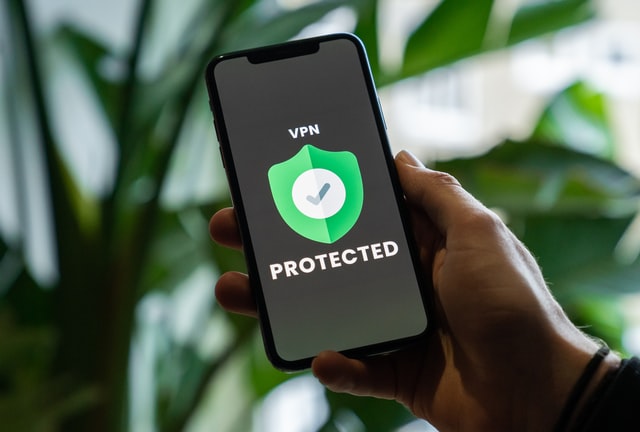In May of 2022, the world was shocked to learn of the EyeSpy malware campaign. This malicious cyberattack involved the use of VPN installers to deliver a piece of surveillanceware known as EyeSpy. The hackers had set up a command and control server that allowed them to control the malware and collect data from infected systems. Security experts first noticed suspicious activity on several VPNs, which led them to discover that these installers had been infected with EyeSpy. This surveillanceware is capable of collecting data and logging keystrokes, making it a powerful tool for hackers.
The threat posed by this malware campaign has prompted security experts to issue warnings about tainted VPN installers being used for malicious purposes. Bitdefender has reported that Trojanized versions of these installers are staging SecondEye, another monitoring application, on victims’ devices. According to Hacker News, hackers have created tainted VPN installers in order to deliver EyeSpy as part of their malware campaign.
In addition to this threat posed by malicious software delivered through tainted VPNs, Kaspersky researchers have uncovered an Android espionage campaign dubbed SandStrike in November 2022. It is important for users to be aware of how they can spot fake apps on Apple Store or Google Play Store in order protect themselves from data breaches or other forms of cybercrime associated with such campaigns.
The EyeSpy malware campaign serves as an important reminder about the dangers posed by malicious software delivered through untrustworthy sources such as tainted VPNs or fake apps on app stores. It is essential for users and organizations alike take steps towards protecting themselves against such threats by being aware and vigilant when downloading applications or using online services that could potentially be compromised with malicious code like EyeSpy surveillanceware.
How the EyeSpy Malware Works
The EyeSpy malware campaign is a sophisticated piece of surveillanceware that is capable of collecting a wide range of data, including keystrokes, passwords, and system information. It can also take screenshots of the infected system and record audio and video. Attackers gain access to these functions through the malware, allowing them to control it and collect the data it collects. The malicious software can be installed via free downloads or by visiting certain illegitimate websites.
Once on a system, EyeSpy connects to its command and control server in order to receive instructions from hackers. This allows them to control the malware’s activities such as taking PC screenshots, sending, downloading and deleting confidential information without users’ knowledge or consent. In many secure environments where connecting microphones to computers is forbidden due to fears that malware might secretly start recording audio without permission; however researchers have discovered that malicious apps can make your smart speakers collect your personal information instead.
Malware is a broad category which includes viruses, worms, spyware and Trojan horses – computer software intended for malicious purposes such as stealing confidential data or damaging systems. Antivirus programs are designed specifically for detecting these types of threats; however even with their presence some variants may still slip through undetected like EyeSpy which has been found with its screenshot activity working just fine but its audio recording feature not being turned on despite being enabled in its codebase.
Who Was Behind the Attack?
The identity of the hackers behind the EyeSpy malware campaign remains a mystery, but security experts believe that it was most likely the work of a sophisticated and well-funded hacking group. This attack is thought to be part of a larger campaign targeting government and military organizations around the world, with the aim of gaining access to sensitive information and data for intelligence gathering and espionage.
This type of cyberattack has been occurring since 2006, with state actions, espionage, and cyberattacks resulting in losses greater than one million dollars. The Cybersecurity & Infrastructure Security Agency (CISA) is responsible for helping organizations prepare for, respond to, and mitigate any potential damage from these attacks. In this case specifically, Hackers targeted SolarWinds by deploying malicious code into its Orion IT monitoring software which is used by thousands of enterprises worldwide.
Another example includes Xavier College where hackers threatened to publish personal information belonging to current and prospective students if their demands were not met. Additionally there have been reports linking Russian hacker group VOODOO BEAR to major cyber campaigns targeting foreign-government leaders as well as ransomware attacks on critical infrastructure services such as health care facilities. It is clear that no form of cyberattack should be tolerated or accepted in any capacity due to their potential devastating effects on individuals or organizations alike.
Implications of the Attack
The EyeSpy malware campaign has raised serious concerns about the security of VPNs and other online services, highlighting the need for organizations to take steps to protect their systems from similar attacks in the future. This attack has demonstrated the increasing sophistication of hackers and the need for organizations to stay ahead of the latest cyber threats. Unfortunately, only 38% of global organizations claim they are prepared to handle a sophisticated cyber attack, while an estimated 54 percent have experienced some form of cyber-attack in 2020 alone. To combat this threat, many organizations are leveraging AI-based tools to better detect threats; however, cyber criminals are also using AI to launch more sophisticated attacks.
To ensure that their systems remain secure and protected from such attacks, there are several simple steps that can be taken by organizations. These include regularly updating software and applications with security patches as well as implementing two-factor authentication on all accounts where possible. Additionally, local backup files should be saved on computers as these will protect data from being lost in a ransomware attack – one type of malicious software used by hackers during an attack. The importance of cybersecurity was further reinforced during the early days of COVID-19 when phishing emails and other cyberattacks on hospitals increased significantly due to remote working practices becoming more widespread across industries worldwide.
The EyeSpy malware campaign is a stark reminder that no organization is immune from such attacks; therefore it is essential for companies to stay vigilant against potential threats by taking proactive measures such as educating employees about cybersecurity best practices through quizzes or training sessions which cover topics like what ransomware is or how local backups can help protect data against ransomware attacks. Ultimately, taking these steps will make all the difference between losing your online accounts or maintaining what is now a precious commodity: Your privacy.
Conclusion
The EyeSpy malware campaign has been a wake-up call for organizations to take steps to protect their systems from malicious attackers. Organizations must stay ahead of the latest cyber threats and ensure that their systems are secure. To do this, they should implement measures such as regularly updating software, using strong passwords, and backing up data. Additionally, organizations should be aware of social engineering attacks and Ransomware threats in order to prevent them from occurring in the first place. Hospitals should also take extra precautions by understanding the new foes they face and updating their cybersecurity and enterprise risk management strategies accordingly. By taking these steps, organizations can reduce the risk of being infected with malware or having data stolen by malicious actors.




Be First to Comment